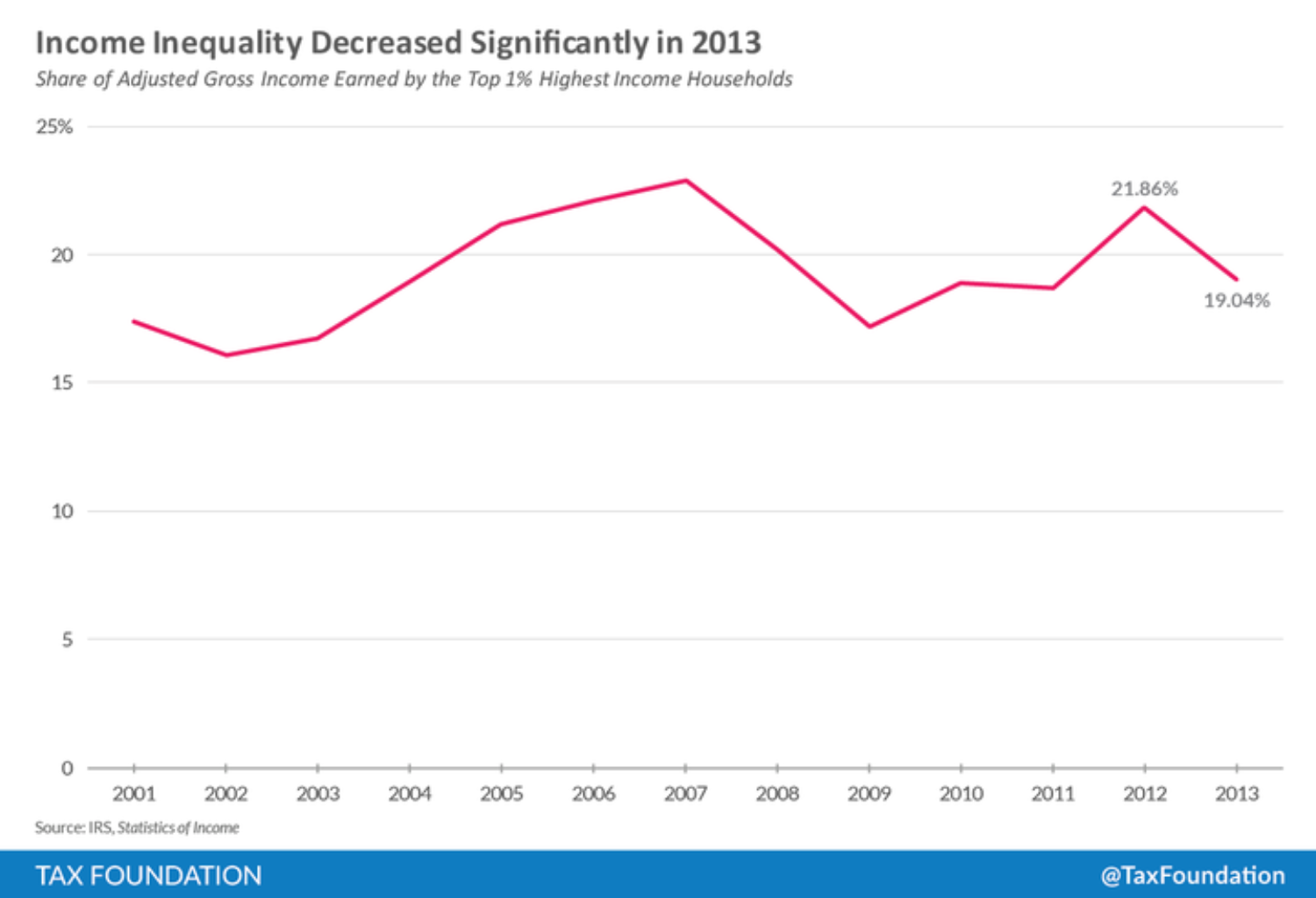One of the most notable economic trends of the last few decades is the rise of the 1 percent, America’s high earners who have seen their incomes and wealth surge while the rest of the country suffers from stagnating wages.
This second Gilded Age has sparked a surprise bestseller, Thomas Piketty’s “Capital in the Twenty-First Century,” and fueled the popularity of presidential candidate Bernie Sanders, whose message about the widening gap between the haves and have-nots has struck a chord.
But now the Tax Foundation, a think tank that studies tax issues, has a surprising finding: Income inequality recently narrowed – at least for a year. Based on an analysis of new data from the Internal Revenue Service for national incomes in 2013, analyst Scott Greenberg found that the share of income among the country’s top 1 percent sharply declined from the previous year.
Related: The Politics of Income Inequality
The top 1 percent of U.S. households took home about 19 percent of the country’s adjusted gross income in 2013, down from almost 22 percent in 2012. Meanwhile, the bottom 95 percent saw their share of income rise to more than 65 percent from 63 percent in the prior year.

So is the middle class feeling that expansion? Not quite.
That one-year decline is largely due to an anomaly in 2012, when America’s wealthiest households rushed to sell assets to lock in lower capital gains rates, given that taxes were set to rise in 2013. That distorted their income to look unusually high in 2012, Greenberg noted.
The IRS data is also reported to raise revenue, not as a measure of social trends, he added, and therefore shouldn’t be taken too seriously, he added.
Income inequality is far from being a hobgoblin of the past, given that the long-term trend shows consistent gains for the top 1 percent since the early 1970s, when the highest-earning American households took home just 7 percent of the country’s total income.
Related: Why Americans Shrug Off Income Inequality
It’s no wonder that one-year decline in income inequity hasn’t been felt by the 99 percent, given the long-term trend of stagnating wages. Real median income – a better measure of household economic well being than share of income – slipped to $53,700 in 2014, down from $54,500 in the previous year, according to Census data issued in September.
Given that marked the third consecutive year of declining household income, it’s no wonder many middle-class American households are feeling under pressure.





